
Porcelain Miracle of Vladimir Kanevsky
/ Главная / Russkiy Mir Foundation / Publications / Porcelain Miracle of Vladimir KanevskyPorcelain Miracle of Vladimir Kanevsky
Svetlana Smetanina
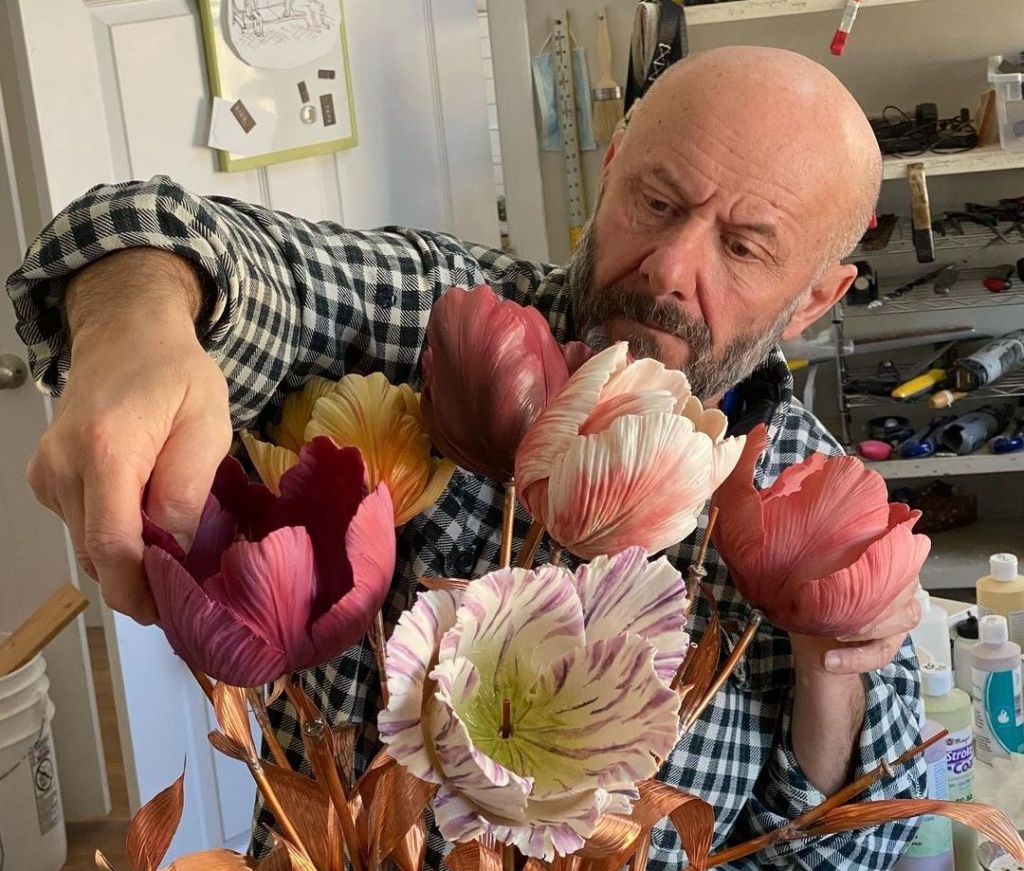
Vladimir Kanevsky. Photo credit: vladimir.kanevsky / Instagram
Vladimir Kanevsky moved from St. Petersburg to the U.S. in the 1980s. And he got engaged in making porcelain flowers instead of architecture, which was an unexpected move even for him. Now designers of international fame collect exquisite bouquets by Vladimir Kanevsky, and the best museums of the world arrange exhibitions of his works.
– You graduated from the architectural department of the Kharkov Civil Engineering Institute. Then you used to work as an architect and designed residential buildings. And about 30 years ago you moved to the USA. How did the passion for porcelain flowers come into your life? Why did an architect become a ceramic artist?
– I gave up architecture for all sorts of political reasons when I was still living in Leningrad. Then I started painting, sculpturing, and so on. And when I came to the U.S., I decided that I was going to sculpture, which had nothing to do with ceramics and porcelain. But I had to earn money somehow because there's no free food for artists in America. I thought a lot and consequently started working with porcelain.
Initially I made some decorative items, plates. Then one day I made a flower. And up until now, I have been making sets and flowers. Sometimes I make sculptures, and I hope I'll get back to sculpturing.
– The art of creating flowers from porcelain is an age-old invention. How popular is it nowadays?
– This is actually an old noble tradition that emerged back in the 18th century when European porcelain was invented in Meissen, Germany. And about 20 or 30 years later they tried to make porcelain flowers, and it became incredibly fashionable immediately. In the 18th-century porcelain flowers were mainly made in Vincennes, France. They were sold to all European countries: even Meissen bought porcelain flowers in France and made compositions of them. Very rich people collected these flowers.
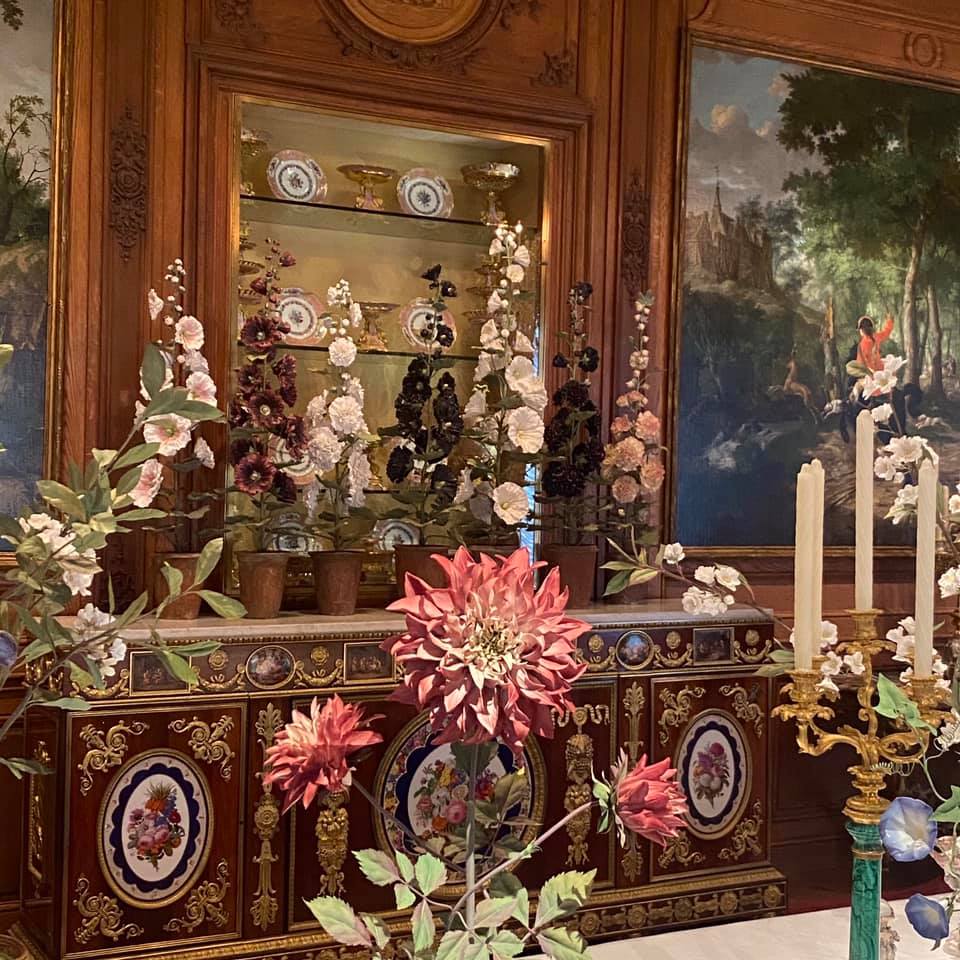
Hollyhocks and dahlias. Photo credit: vladimir.kanevsky / Instagram
– Did you take any special training for this?
– No, I just started making them and spent on my experiments a month and a half. So I'm a self-trained person. I met artists from Meissen company when was working for them preparing an exhibition dedicated to the 300th anniversary of the invention of porcelain. And it turned out that I do many things quite a different way from the tradition.
– You even have your own special technology, don't you?
– I do have, but it's not one technology. Every time I figure out what is the better way to make each new piece. Sometimes this thinking takes quite a long time, even years. It reminds me of an architect's work that involves combining engineering craft and art.
What I do is based on the European tradition. However, it's a wholly different thing, a completely different idea. It is totally modern art. I make big pieces - some flowers are the size of a man's head. These are monumental objects that are almost architectural in scale.
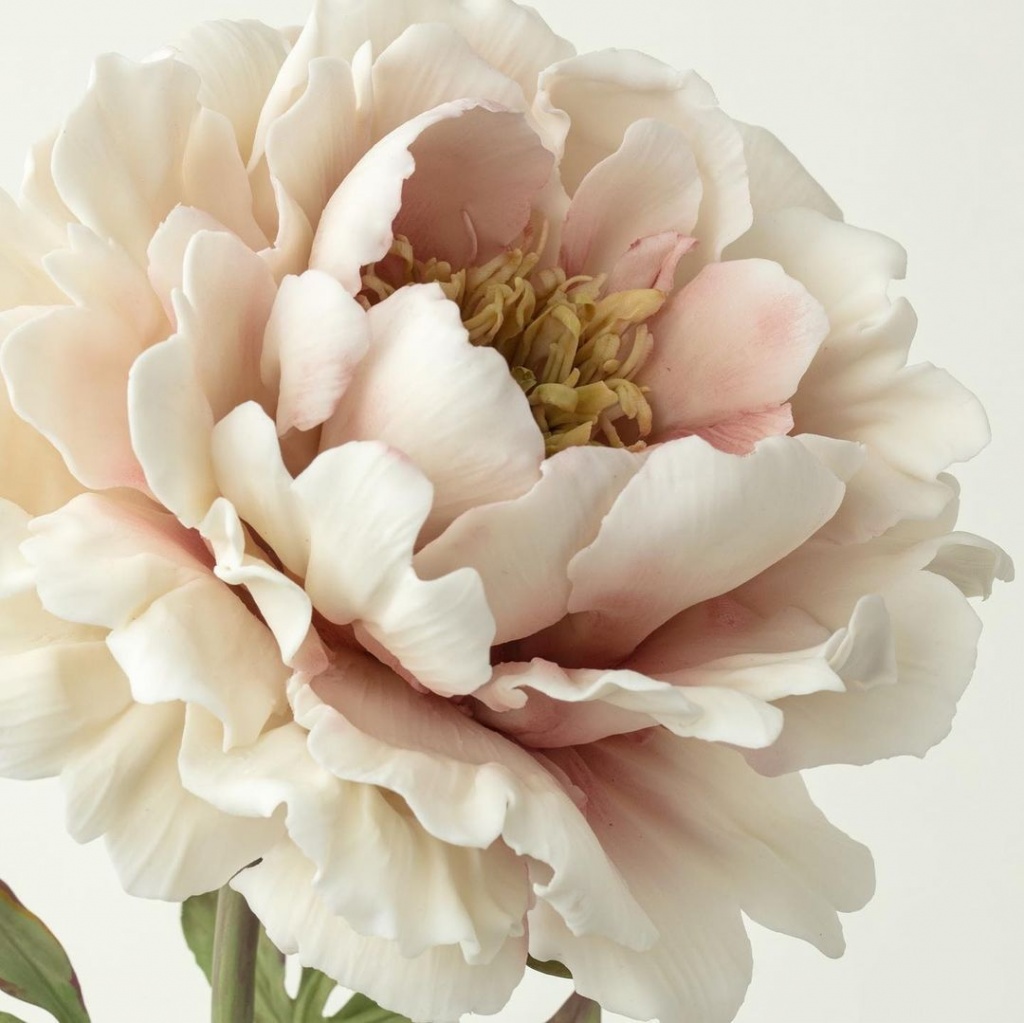
Peony. Photo credit: vladimir.kanevsky / Instagram
– Were flowers very different 300 years ago?
– They were made small and not realistic. That was the age of the late Baroque, so the porcelain flowers were very mannerist, pretentious, and overly decorative. They were not based on nature’s observations. Flowers close to realism appeared much later, in the nineteenth century, and very soon they ceased to be fashionable. This trend was seen as sluggish and boring.
I don't make realistic flowers, regardless of what they seem to be. They just look convincing.
– It appears that this art experienced renaissance relatively recently, and it has gained its popularity back nowadays, hasn't it?
– As far as I know, there has been no renaissance. It seems to me that I was the reason that flowers became popular again. There was an artist in America who made flowers out of clay and painted them with acrylic paints. But I never saw any porcelain flowers. It is now that this has become fashionable. Although, it's on the surface, and I don't understand why it was out of sight for so long.
– What was the first flower you made?
– The first one was a carnation. I painted it blue for some reason. I soldered the stem over a gas stove because I didn't have money for a soldering machine. That was how it started. And then I made lilies of the valley. Its flowers have these little serratures - I didn't know how to make them. And the flowers turned out to look more like brass bellflowers. Those first items were very funny. But somehow, they ended up in very good collections right away. For example, my first lilies of the valley were bought by Valentino, the world-famous Italian designer.
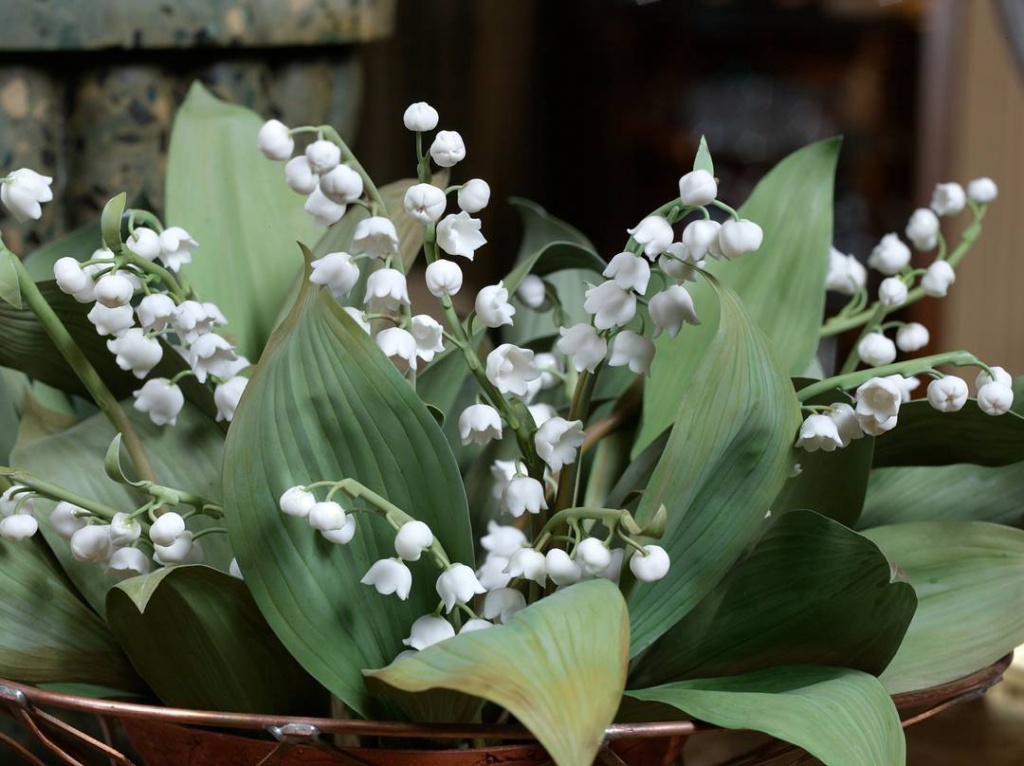
Lilies of the valley. Photo credit: vladimir.kanevsky / Instagram
– Indeed, it's amazing - as if the right doors were opened for your flowers from the very start.
– It took me a long time to find out that it had been him who bought it. I was lucky enough to get into the proper niche right away - a high-end store in New York City. That was the first stage. And the second one began when I got a call from a Dior boutique that sold interior items. They invited me to Paris for a meeting and started ordering pieces. And their clients are really very famous and prominent people. Many of them bought my flowers and made their own collections, which I was not aware of at first. One of them was the famous interior designer Alberto Pinto.
A few years ago I was in Paris, and suddenly one of my clients called me and said, "Alberto Pinto wants to see you. We fixed an appointment and went to see him. It turned out that he had collected my porcelain for ten years and it was all bought from Dior. He showed it to me, pressed his cheek against it... All in all, it was tremendously touching.
At the time the widow of the famous American actor Yul Brynner was the director of the Dior boutique. And she used to tell Alberto Pinto that I had lived somewhere in Siberia and didn't speak a word of English. It was the same at the other stores.
After that, he ordered me probably the biggest set I had ever made - 264 pieces. Recently I made another big set like that for the American fashion designer Tori Burch.
And the first order was really huge - I was ordered 15 porcelain cabbages of actual size. They were soup tureens. You could use them as tableware, but they were still more of a decorative type. It was quite a long time ago and not at the level I do today. I wasn't serious about it at all back then - I was mostly working on sculptures.
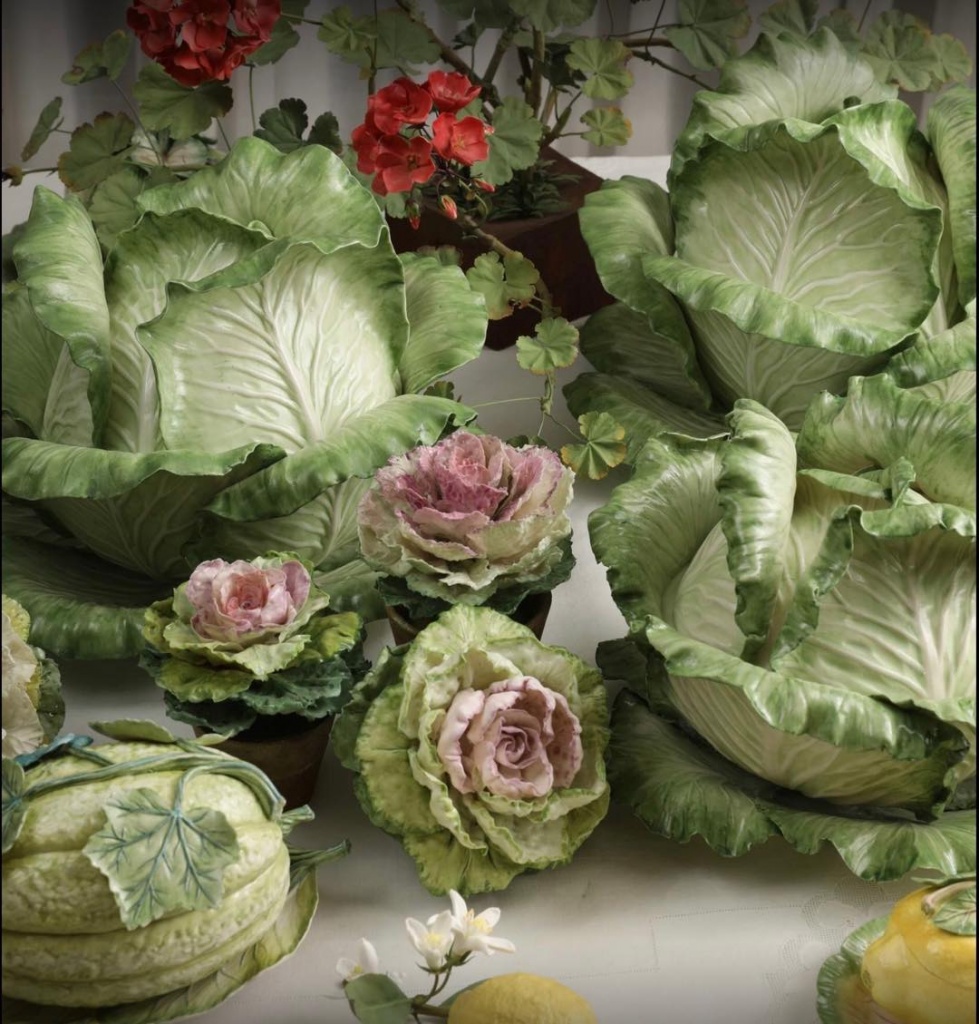
The “Cabbage" set. Photo credit: vladimir.kanevsky / Instagram
– So you never thought that flowers would become the mainstream of your art, did you?
– No, I didn't. There were many attempts to give it up because I thought it was distracting. I still feel that way.
– Over the years, you've probably made all kinds of flowers, haven't you? You have such an incredible variety…
– That's not exactly true. I have a competitor with whom I used to work together - she makes flowers out of metal. She was making just about every kind of flower there is. And I have a pretty limited number of flower types. It is not the variety that I'm interested in. It is rather a kind of object that I can make out of that flower. Let's say if it's a hollyhock, I can create a vertical composition. And I appreciate that, so I make a lot of different hollyhocks. It's all about a theme - it doesn't really matter what kind of flower it is.
Sometimes something makes a strong impression on me. When I was in Madrid, I saw artichokes for the first time in the Botanical Garden. They are huge, predatory flowers. They really impressed me, and that's why I made them.
I explore some aspects of the flower - work with color, with scale, with size - it can be a miniature or something big. There are some types of flowers that I only make once because there's nothing else to be said. And some I keep making over and over again, like the lilacs. It can be made in any size, shape, spirit - any story, any narrative. It's a convenient flower. The same is true about a hollyhock.
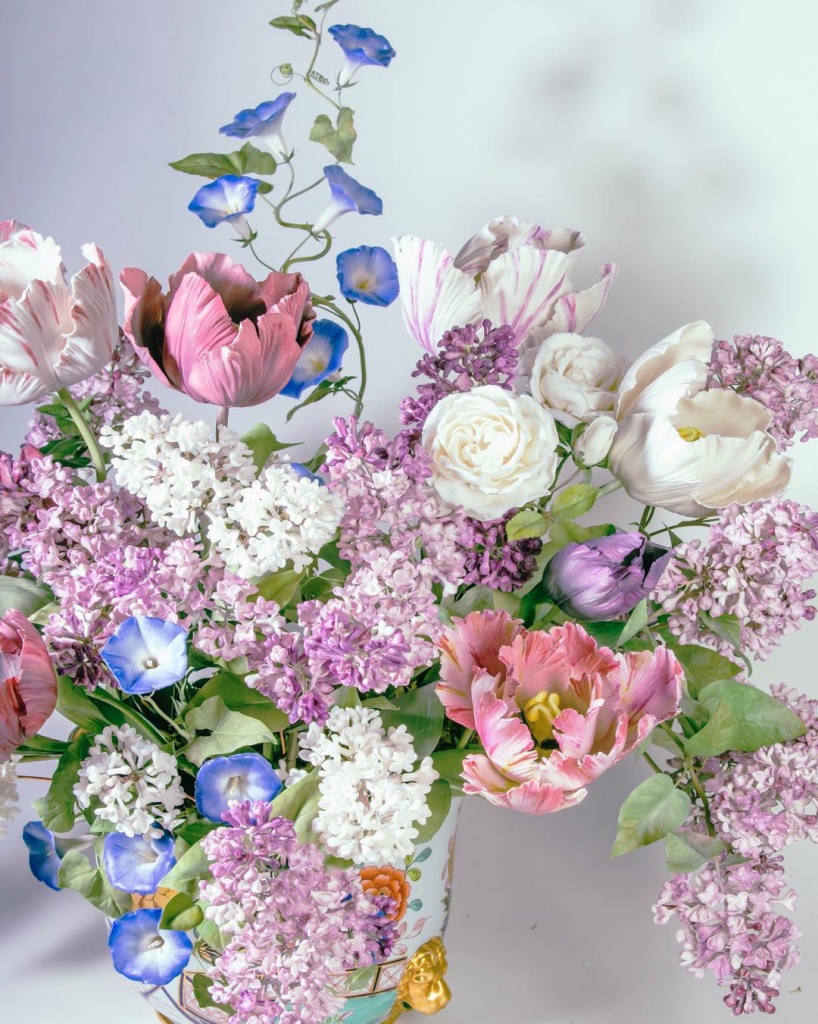
Bouquet. Photo credit: vladimir.kanevsky / Instagram
– A few years ago you had an exhibition at the Hermitage. Tell us about it, please.
– I had a big exhibition there in 2017. It was dedicated to the 100th anniversary of the Revolution. And it was held in that very hall where the Revolution had outbroken. I had two large rooms there, where I exhibited 60 works - flowers, actually, huge ones. It was a very important exhibition for me. It made an impression even in the U.S.
– Do you plan any new exhibitions somewhere?
– My exhibition in Washington, D.C. has just ended, and now I've been invited to do an exhibition at a museum in New York. It's a museum of the Hermitage level, one of the world's major museums. It will be three years from now, not sooner. But if it works out, it will be a huge project.
– Now your works can be found in the homes of many renowned people, including members of royal dynasties…
– This is one of the very interesting aspects of the case - all the time I deal with very famous and very interesting people. I have friendly relationships with some of them. A long time ago, I made an exhibition of my flowers in New York. It was based on a book about flowers by Carolyne Roehm, a well-known American lifestyle expert who has published many books about gardens, flowers, fashion, and everyday life in general. Her book featured great photos of flowers, which I reproduced in my work. The exhibition finished, and literally a month later I saw my flowers on the cover of the popular interior design magazine - Veranda. I started flipping through the magazine and saw that my flowers were all over her house - Carolyne had bought the whole exhibition. I wrote her a letter, she came to my studio, and now we've been friends for years.
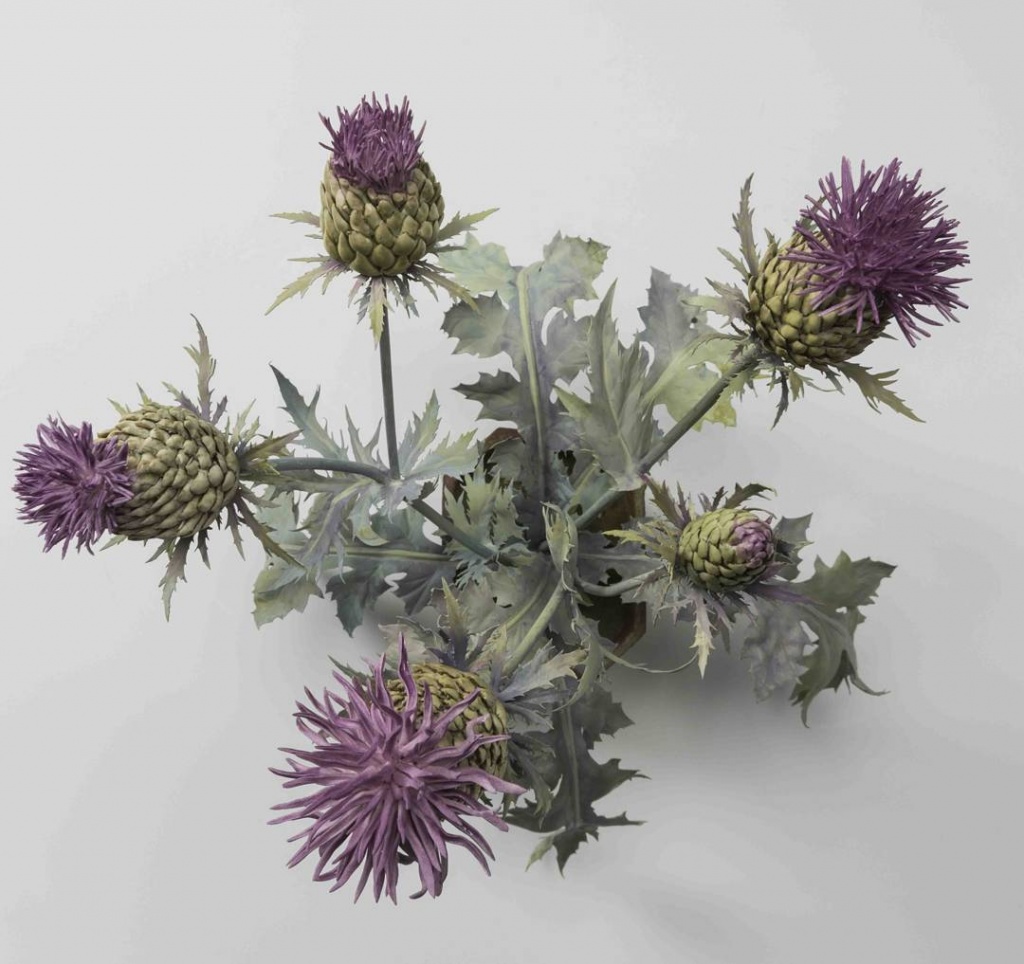
Thistle. Photo credit: vladimir.kanevsky / Instagram
When you deal with famous designers, you understand that this is living history. I was sitting in the studio, suddenly Oscar de la Renta (American fashion designer - ed.) called and asked if he could come to my studio. We became friends in a way, although it's hard to be friends with such people - they're always busy. He and I did some work together. I was at his house a week before he died. He was already in bed, and yet he said to me, "Well, let's do something together..." I couldn't refuse him: of course, we will. But it didn't work out...
– It looks like your hobby has given you a completely different life…
– Yes, but it distracted me from sculpturing. Perhaps, if I had practiced sculpture, it would have been more interesting. But that's how it has happened.
Clematis. Photo credit: vladimir.kanevsky / Instagram###https://www.instagram.com/vladimir.kanevsky/
– Have you ever tried to get back into architecture?
I tried. But not in America. When I came to America, I was 38 years old - at that age, it's too late to start working in architecture. If I had still done it, then I would have been busy with some kind of routine that I wasn't interested in. I tried to get back to architecture in Moscow, but it's just like playing around. You must commit to architecture completely - it's serious stuff.
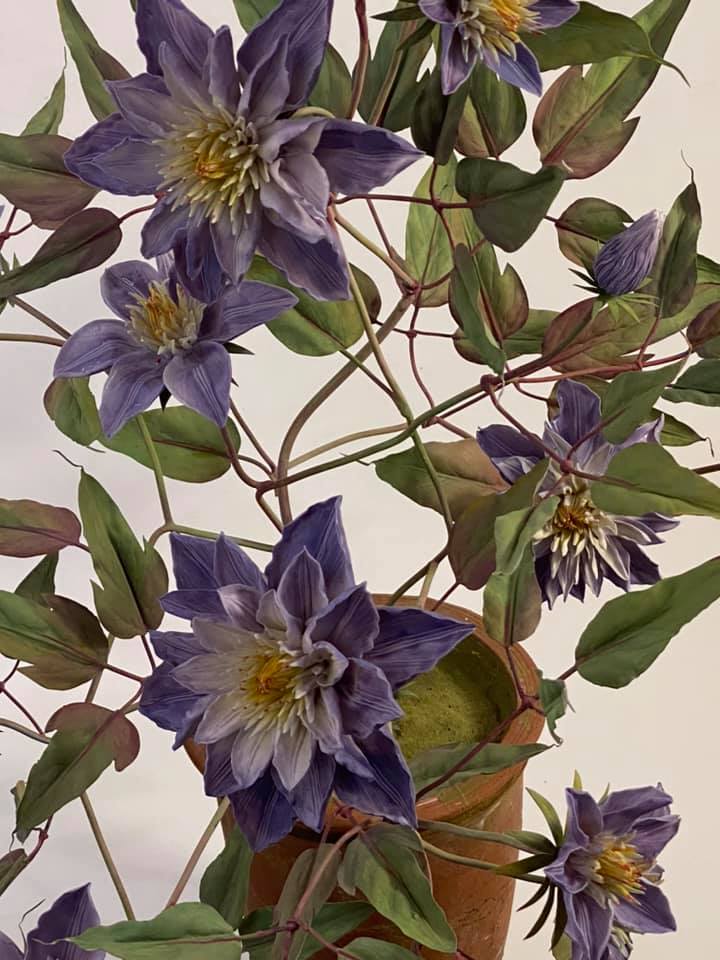
Pelargonium. Photo credit: vladimir.kanevsky / Instagram
– So, what are your plans for the near future?
– Actually, my plans are to stop working with porcelain. But this plan is virtually impossible to accomplish because the number of orders is such that I'm busy around the clock. And if there is an exhibition in New York, I will be full-time busy with it - for the next couple of years for sure.
– Will you have to make new compositions?
– I always make everything new for every exhibition. My studio is completely empty right now - everything has been scooped up. It's even kind of sad…
New publications

 Mikhail Kalatozov, a director who transformed the world of cinematography in many ways, was born 120 years ago. He was a Soviet film official and a propagandist. Above all, he was capable of producing movies that struck viewers with their power and poetic language.
Mikhail Kalatozov, a director who transformed the world of cinematography in many ways, was born 120 years ago. He was a Soviet film official and a propagandist. Above all, he was capable of producing movies that struck viewers with their power and poetic language.  Ukrainian authorities have launched a persecution campaign against the canonical Ukrainian Orthodox Church (UOC), the biggest one in the country's modern history. Over the past year, state sanctions were imposed on clergy representatives, searches were conducted in churches, clergymen were arrested, criminal cases were initiated, the activity of the UOC was banned in various regions of the country, and monasteries and churches were seized.
Ukrainian authorities have launched a persecution campaign against the canonical Ukrainian Orthodox Church (UOC), the biggest one in the country's modern history. Over the past year, state sanctions were imposed on clergy representatives, searches were conducted in churches, clergymen were arrested, criminal cases were initiated, the activity of the UOC was banned in various regions of the country, and monasteries and churches were seized.  When Nektary Kotlyaroff, a fourth-generation Russian Australian and founder of the Russian Orthodox Choir in Sydney, first visited Russia, the first person he spoke to was a cab driver at the airport. Having heard that Nektariy's ancestors left Russia more than 100 years ago, the driver was astonished, "How come you haven't forgotten the Russian language?" Nektary Kotlyaroff repeated his answer in an interview with the Russkiy Mir. His affinity to the Orthodox Church (many of his ancestors and relatives were priests) and the traditions of a large Russian family brought from Russia helped him to preserve the Russian language.
When Nektary Kotlyaroff, a fourth-generation Russian Australian and founder of the Russian Orthodox Choir in Sydney, first visited Russia, the first person he spoke to was a cab driver at the airport. Having heard that Nektariy's ancestors left Russia more than 100 years ago, the driver was astonished, "How come you haven't forgotten the Russian language?" Nektary Kotlyaroff repeated his answer in an interview with the Russkiy Mir. His affinity to the Orthodox Church (many of his ancestors and relatives were priests) and the traditions of a large Russian family brought from Russia helped him to preserve the Russian language.

 The leaders of the Friends of the Great Russia cultural association (Amici Della Grande Russia) in Italy believe that the Western policy of abolishing Russian culture in Europe has finally failed. Furthermore, it was doomed to failure from the beginning.
The leaders of the Friends of the Great Russia cultural association (Amici Della Grande Russia) in Italy believe that the Western policy of abolishing Russian culture in Europe has finally failed. Furthermore, it was doomed to failure from the beginning.  Name of Vladimir Nemirovich-Danchenko is inscribed in the history of Russian theater along with Konstantin Stanislavski, the other founding father of the Moscow Art Theater. Nevertheless, Mr. Nemirovich-Danchenko was a renowned writer, playwright, and theater teacher even before their famous meeting in the Slavic Bazaar restaurant. Furthermore, it was Mr. Nemirovich-Danchenko who came up with the idea of establishing a new "people's" theater believing that the theater could become a "department of public education."
Name of Vladimir Nemirovich-Danchenko is inscribed in the history of Russian theater along with Konstantin Stanislavski, the other founding father of the Moscow Art Theater. Nevertheless, Mr. Nemirovich-Danchenko was a renowned writer, playwright, and theater teacher even before their famous meeting in the Slavic Bazaar restaurant. Furthermore, it was Mr. Nemirovich-Danchenko who came up with the idea of establishing a new "people's" theater believing that the theater could become a "department of public education."  "Russia is a thing of which the intellect cannot conceive..." by Fyodor Tyutchev are famous among Russians at least. December marks the 220th anniversary of the poet's birth. Yet, he never considered poetry to be his life's mission and was preoccupied with matters of a global scale. Mr.Tyutchev fought his war focusing on relations between Russia and the West, the origins of mutual misunderstanding, and the origins of Russophobia. When you read his works today, it feels as though he saw things coming in a crystal ball...
"Russia is a thing of which the intellect cannot conceive..." by Fyodor Tyutchev are famous among Russians at least. December marks the 220th anniversary of the poet's birth. Yet, he never considered poetry to be his life's mission and was preoccupied with matters of a global scale. Mr.Tyutchev fought his war focusing on relations between Russia and the West, the origins of mutual misunderstanding, and the origins of Russophobia. When you read his works today, it feels as though he saw things coming in a crystal ball...